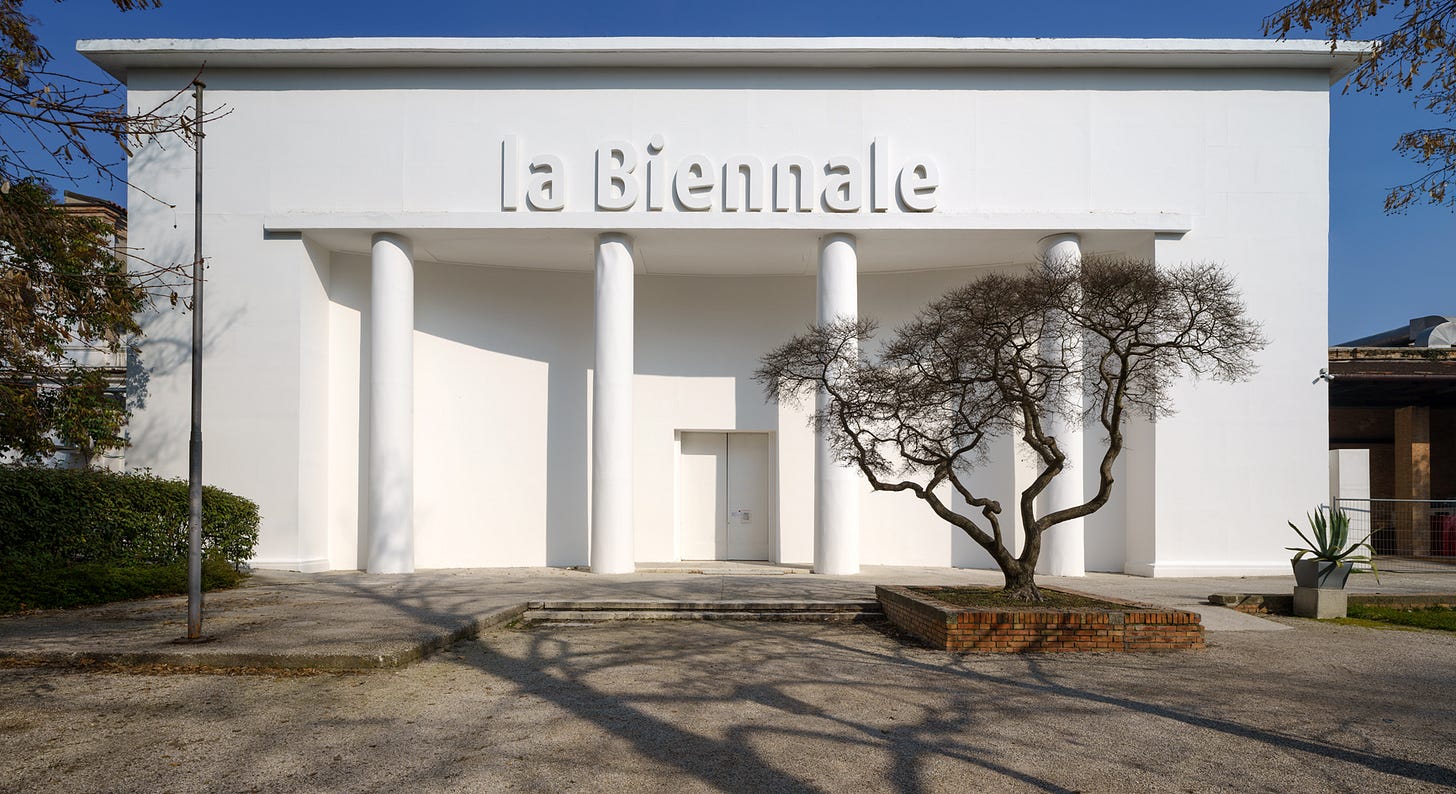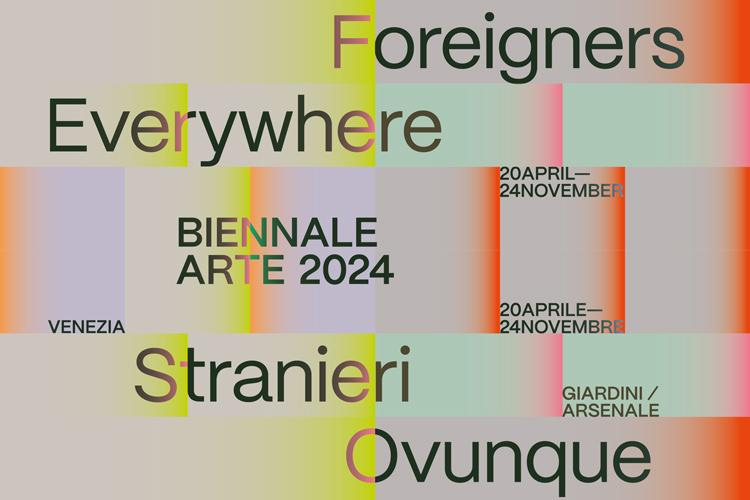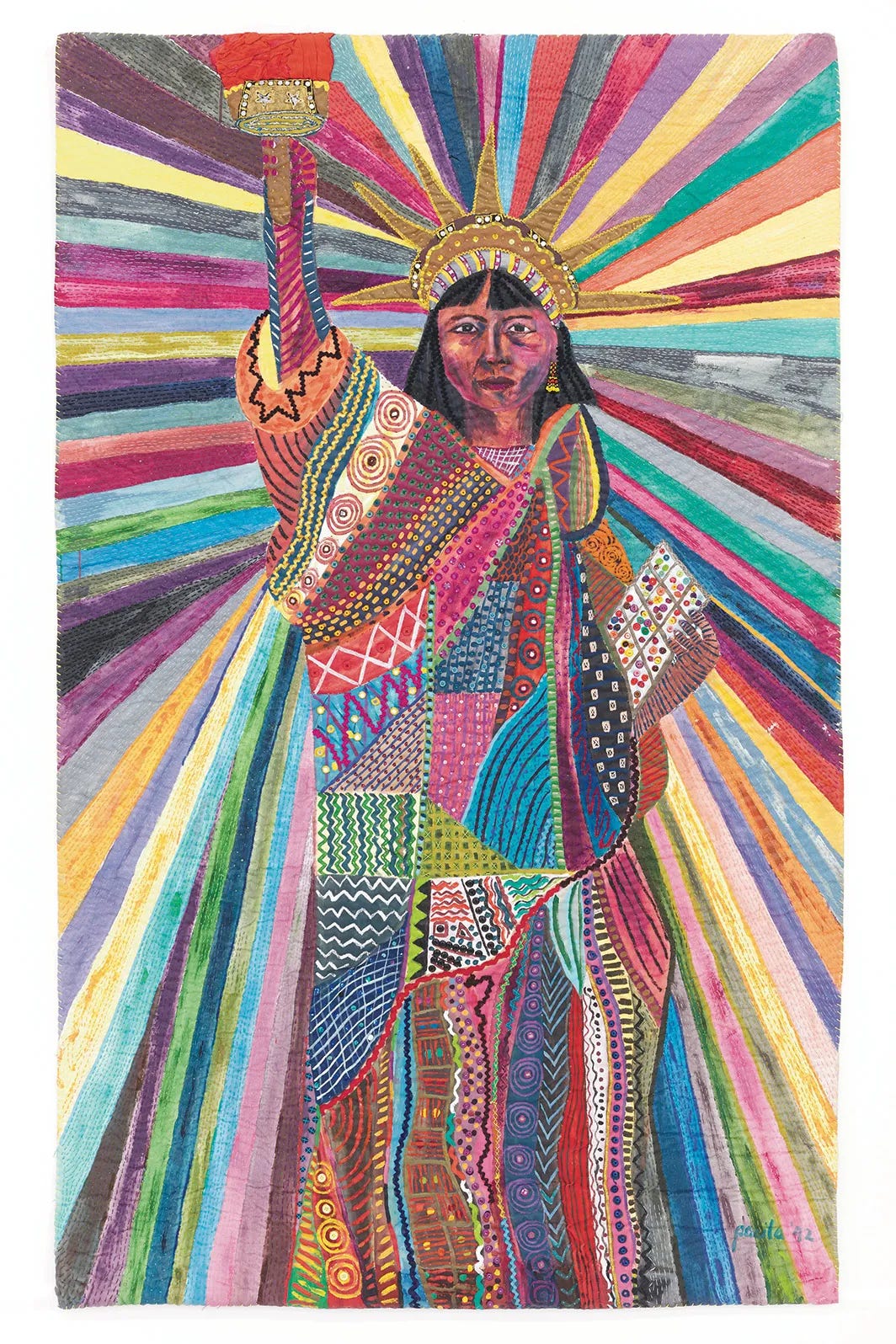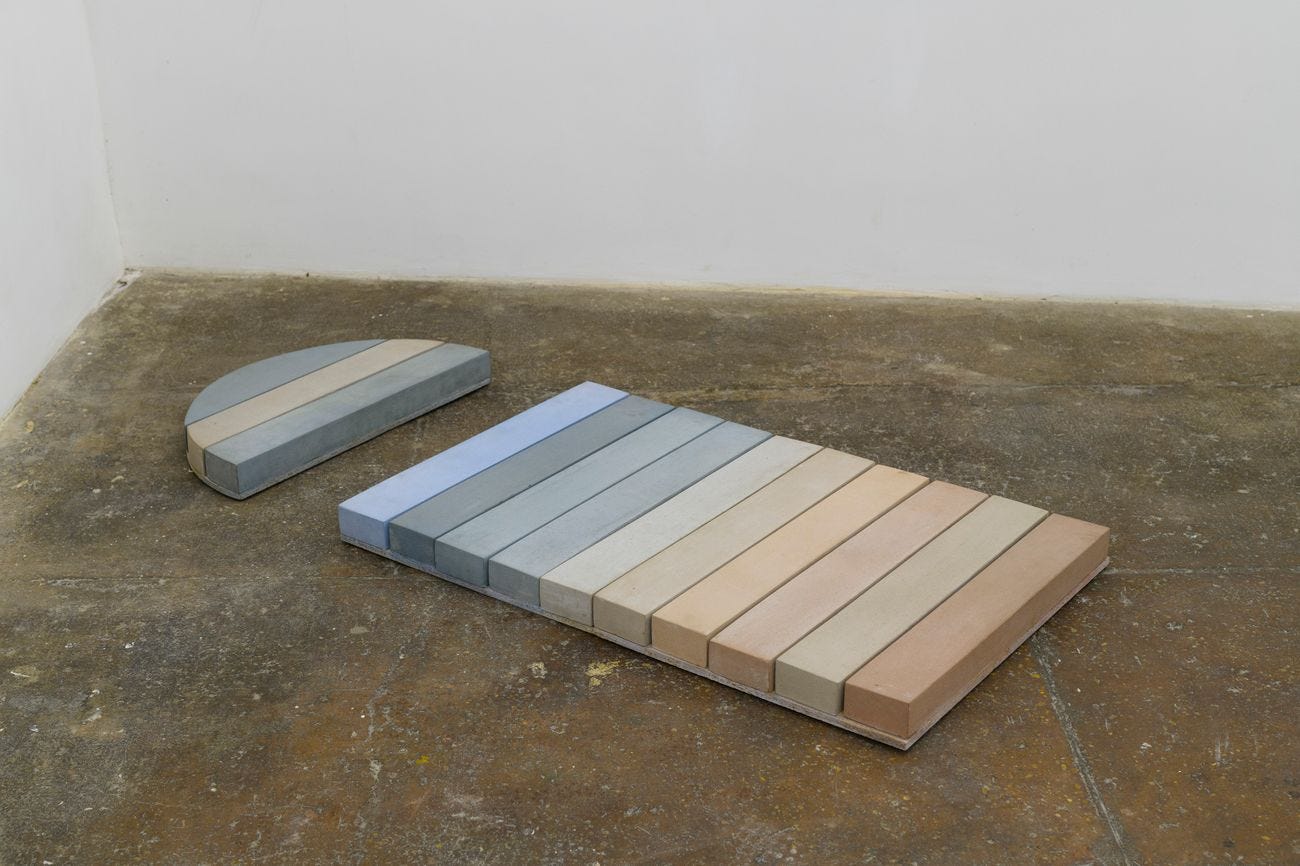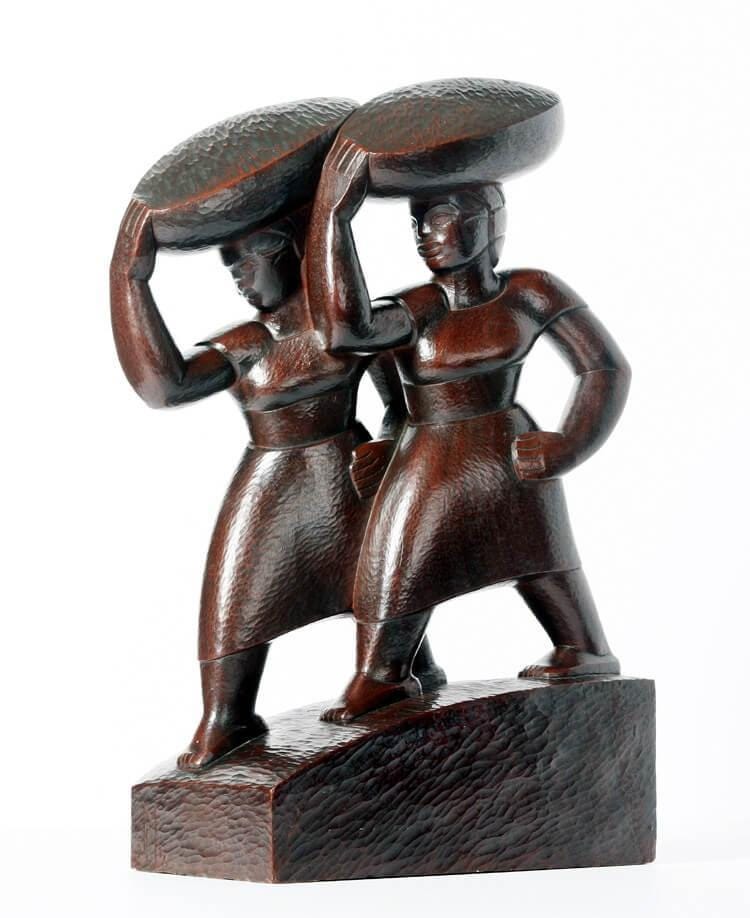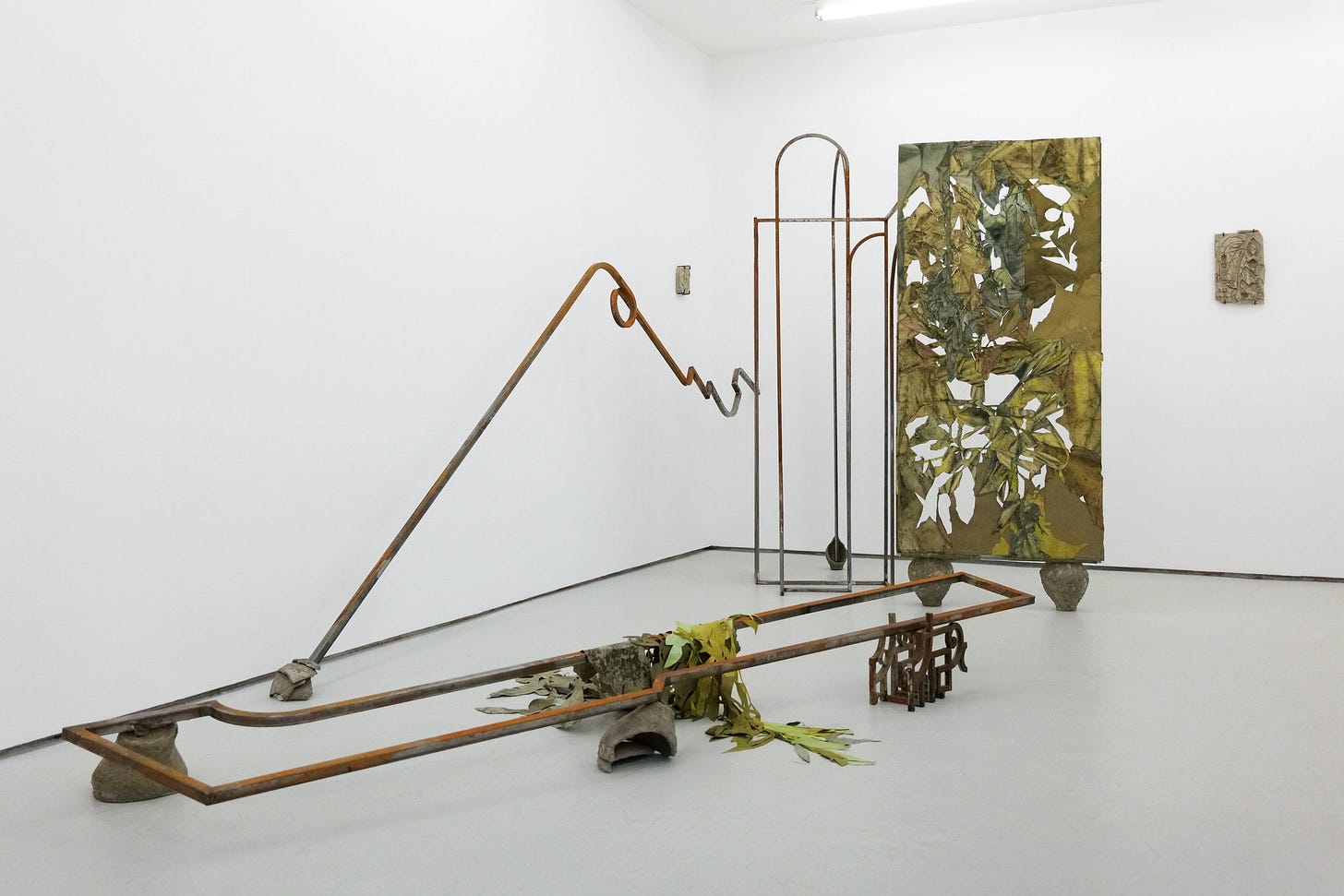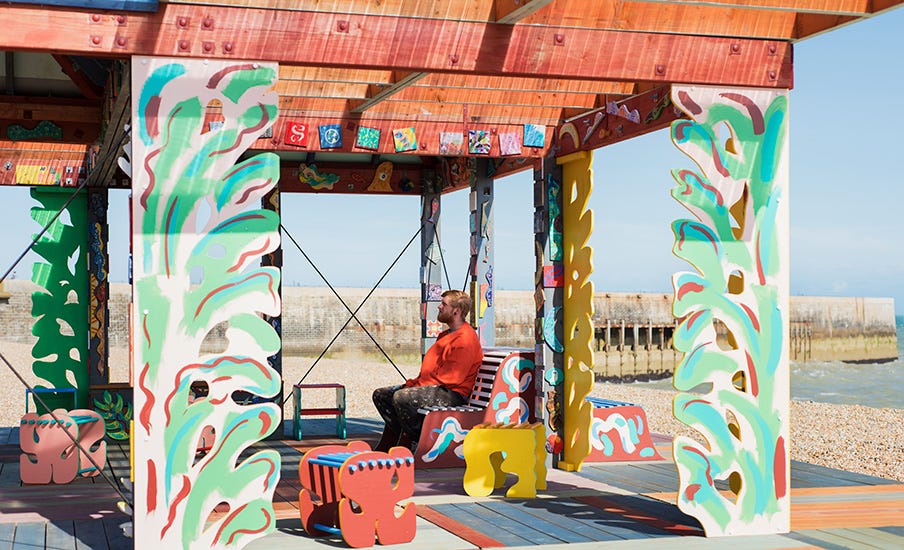Dear Readers,
Next week marks one of the most exciting events of the cultural calendar: the opening of the Venice Biennale, aka the Art Olympics. As always, an overwhelming number of brilliant artists are exhibiting across the central exhibition, national pavilion, and off-site locations.
This year’s theme is “Stranieri Ovunque / Foreigners Everywhere”, curated by Adriano Pedrosa, and I’ve selected some stand-outs from the 330 participating artists, many of whom are women.
Read on for your go-to guide, and hope to see you there!
This article is divided into 5 Parts: (1) Central Exhibition at the Giardini and Arsenale; (2) Pavilions; (3) Off-site. Enjoy!
1. Central Exhibition at the Giardini and Arsenale
1. Pacita Abad (1946–2004)
Born in the northern Philippine island of Basco, Abad moved to the US in 1970 to flee political persecution. Her work is rich with social commentary, tribal influences and natural scenes.
2. Mariam Abdel-Aleem (1930–2010)
Abdel-Aleem was primarily a printmaker who had an illustrious career teaching art. Educated in Cairo, California and New York, she combined traditional Egyptian and contemporary influences into complex, surreal scenes.
3. Etel Adnan (1925-2021)
As one of America and Lebanon’s most notable poets, Adnan’s life and work fits naturally into ‘Foreigners Everywhere’. After years of writing poetry, the Algerian war led her reassess her artistic output: “I didn’t need to write in French anymore, I was going to paint in Arabic.”
4. Carmen Herrera (1915–2022)
Herrara was a Cuban-American abstract painter. In 2016, she was honoured with her first major museum exhibition at The Whitney at age 101. Having started out studying architecture, Herrera pioneered geometric abstraction with her paintings and sculptures, which starkly contrast simplistic lines and shapes from ovals to semi-circles, in a multitude of colours.
5. Nedda Guidi (1923–2015)
One of Italy’s most notable ceramic artists: “The art of ceramics is so persuasive that it constitutes a veritable trap for whoever practices it.”
6. Edna Manley (1900–1987)
Born in Bournemouth and raised in Kingston, Jamaica, Manley is one the most important Jamaican artists. Working primarily in sculpture, she led the Jamaican Art Movement with her modern influenced stylised works.
7. Nour Jaouda (b.1997)
Jourda is a Eygptian artist based in London and Cairo. She graduated from the Royal College of Art in 2021, and has since developed her practice, which often utilises, but is not limited, to textiles. She is interested the idea alienation, remnants and decay, which is visible in her work’s incorporation of negative space her fabric’s ghostly, tatted appearance.
8. Sol Calero (b.1982)
Calero’s vibrant, immersive sculptures create social space or communing. Calero, originally from Venezuela, is has worked on many projects globally, like this work on Folkstone Beach, UK. Through colour and open structures, she cultivates inviting atmospheres which seeks to transgress cultural frontiers.
Other artists to look out for:
Emiria Sunassa (1894–1964)
Lydia Ourahmane (b.1992)
Fanny Sanín (b.1938)
Violeta Quispe (b.1989)
Giulia Andreani (b.1985)
Tina Modotti (1896–1942)
Amelia Peláez (1896–1968)
María Aranís (1903–1966)
Bárbara Sánchez-Kane (b.1987)
Celeste Woss y Gil (1891–1985)
Emmi Whitehorse (b.1956)
Agnes Waruguru (b.1994)
Elena Izcue Cobián (1889–1970)
2. Pavilions
Argentina: Luciana Lamothe, “Ojala se derrumben las puertas (I hope the doors collapse)”
Lamothe works with site-specific sculptures to examine the body’s interaction with its built environment. In her Venice exhibition, the artist describes:
“I propose is to generate a transmateriality, in which hard materials can be soft and soft materials can also be hard.”
Benin: Ishola Akpo, Moufouli Bello, Romuald Hazoumé and Chloé Quenum, “Everything Precious is Fragile”
This is Benin’s first ever year at Venice Biennale, and three out of their four representing artists are women. Curated by Azu Nwagbogu in collaboration with Yassine Lassissi, the show reflects the artists’ varied work draws on an expansive influences, Gèlèdé philosophy, Vodun tradition to contemporary constructs of identity.
Brazil: Glicéria Tupinambá (also known as Célia Tupinambá), Ka’a Pûera: nós somos pássaros que andam
Not only is Tupinambá representing Brazil, she is also specifically representing her community of the Tupinambá Indigenous people.
Keep reading with a 7-day free trial
Subscribe to The Great Women Artists to keep reading this post and get 7 days of free access to the full post archives.





